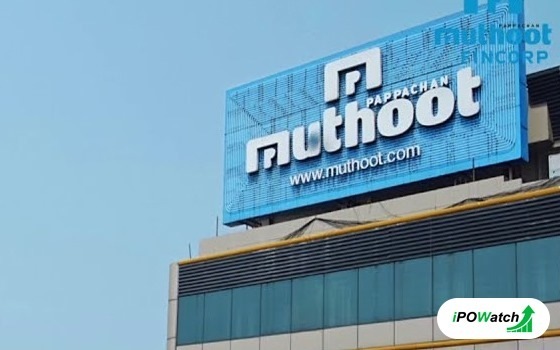1. At a Glance
Imagine lending money to half of rural India, and still having to borrow ₹8,653 crore yourself. That’s Muthoot Microfin Ltd (NSE: MUTHOOTMF), the Muthoot Pappachan Group’s microfinance arm, now worth a market cap of ₹2,868 crore — a financial soap opera starring small loans, large dreams, and quarterly plot twists.
As ofQ2FY26, the company clocked aprofit of ₹30.5 croreonrevenue of ₹576 crore, which—if you’re used to double-digit growth—might feel like running a marathon only to discover you’re on a treadmill. Quarterly revenue fell13% QoQ, and profit dived50.5% QoQ, even though digital collections hit a record ₹569 crore (24% of total collections).
Yet the market still swipes right on this NBFC-MFI: thestock is up 30% in six months, trading around₹168 per share, or1.09x book value. Debt, however, looms large at₹8,101 crore, making theirDebt-to-Equity ratio 3.08—basically, three rupees borrowed for every one rupee of equity.
So is Muthoot Microfin the rural revolution it promises—or just another interest story gone sideways? Strap in, because the numbers are about to get spicy.
2. Introduction
Microfinance is a noble word. It sounds like finance, but with moral satisfaction attached. Muthoot Microfin, founded in 1992, claims to empower rural women with financial inclusion. The truth? It’s a battleground of high operational costs, political risk, and interest-rate gymnastics—wrapped in the warm shawl of “women empowerment.”
Part of theMuthoot Pappachan Group(the cousin clan to Muthoot Finance), the company is India’s2nd largest NBFC-MFIby gross loan portfolio (₹12,519 crore in H1FY25). Its loans reach1,593 branches across 369 districts in 18 states, with South India as its fortress—Kerala and Tamil Nadu alone contribute over 50% of its portfolio.
But FY25 wasn’t all empowerment and applause. The company reported aloss of ₹223 crorein FY25, thanks to rising credit costs and post-COVID stress lagging rural borrowers. The latest quarter (Q2FY26) shows a small recovery—a ₹30 crore profit—but thereturn on equity is still a sad -8.19%.
In microfinance, scale is sexy, but sustainability is what separates the lenders from the spenders. So, let’s audit this feel-good story one spreadsheet at a time.
3. Business Model – WTF Do They Even Do?
Muthoot Microfin lends small-ticket loans, primarily towomen from lower-income households, using theJoint Liability Group (JLG)model. That means five women form a group, vouch for each other, and collectively shoulder repayment responsibility. (Think of it as a WhatsApp group where the admin can legally collect money.)
Their loan portfolio divides into:
- Livelihood Solutions (96.7%)– working capital, small business, income-generation loans.
- Life Betterment Loans– solar lights, appliances, and cell phones (because WhatsApp groups need smartphones).
- Health & Hygiene Loans– for sanitation and medical expenses.
- Secured Loans– gold loans and “Muthoot Small & Growing Business” loans for slightly bigger dreams.
They’ve also gone digital. TheirMahila Mitra App, downloaded by1.7 million users, enables QR payments and digital tracking—an impressive feat in villages where cash once ruled.
The business is emotionally sold as “helping women start small businesses,” but financially, it’s all about interest spread. Muthoot borrows at 9–10% (as evident from recent NCD issues) and lends at 20–22%, earning the margin that fuels its ₹2,868 crore valuation.
Still, with rising GNPA (4.61% in Q2FY26) and high leverage, even micro-loans can cause macro headaches.
4. Financials Overview
| Metric (₹ Cr) | Q2FY26 | Q2FY25 | Q1FY26 | YoY % | QoQ % |
|---|---|---|---|---|---|
| Revenue | 576 | 662 | 559 | -13.0% | +3.0% |
| EBITDA (OP) | 258 | 329 | 226 | -21.6% | +14.2% |
| PAT | 30.5 | 62 | 6 | -50.8% | +408.3% |
| EPS (₹) | 1.79 | 3.61 | 0.36 | -50.4% | +397.2% |
Annualised EPS = ₹1.79 × 4 = ₹7.16 → P/E = ~23.4x at ₹168/share.
For a company that just returned to profitability, that’s not a terrible multiple—but the story depends on how long they can keep credit costs low and collections high.
The fall in YoY revenue and PAT shows stress, but the quarterly rebound hints at operational improvement (or creative cost discipline).
5. Valuation Discussion – Fair Value Range Only
Let’s attempt an academic valuation—no price targets, only
education (and mild entertainment).
1. P/E Method:Annualised EPS = ₹7.16Industry P/E = ~87x (median of peers).Muthoot Microfin trades far below, at around23x forward earnings.→ Fair P/E range (discounted for scale, volatility):15x–25x→ Fair Value Range = ₹107 – ₹179
2. EV/EBITDA Method:EV = ₹9,800 croreEBITDA (TTM) = ₹447 croreEV/EBITDA = 21.9xIndustry microfinance average ≈ 20–25x for stable peers like CreditAccess.→ Fair EV/EBITDA range 18–22x = fair EV of ₹8,000–₹9,800 crore → aligns with CMP
3. Simplified DCF:Let’s assume:
- Base Free Cash Flow (FY25): negative due to loss; FY26 stabilised ~₹250 crore ops inflow.
- Growth rate 8%, cost of equity 14%, terminal growth 3%.
DCF suggests intrinsic equity value ≈ ₹2,700–₹3,000 crore range.
✅Educational Fair Value Range:₹155 – ₹185 per share.(For learning only. Not investment advice.)
6. What’s Cooking – News, Triggers, Drama
This quarter was a Bollywood blend ofdebt, ratings, and digital dreams.
- NCD Mania:Between September and November 2025, Muthoot Microfinissued over ₹650 crore worth of NCDs, mostly private placements at9.8–10% couponsfor 24–36 months. Even a$15 million bond(SOFR +275bps) was floated—because nothing says “microfinance” like offshore borrowing.
- CRISIL’s Blessing:CRISIL reaffirmedA+/A1+ ratingsand even upgraded theoutlook to “Positive”in Sept 2025, citing strong capital adequacy and consistent collection efficiency.
- Collections:₹569 crore collected digitally in Q2FY25—24% of total. That’s not just a stat; it’s a shift in behavior. For an MFI, digital collections reduce fraud and increase repayment visibility—finally, some fintech vibes.
- Profit Alert:Q2FY26 profit ₹30.5 crore vs ₹62 crore last year. PAT margin still thin (~5%).
- Corporate Housekeeping:They updated their SEBI (PIT) code and UPSI disclosure rules on Nov 5, 2025. Clearly, governance polishing continues post-listing.
7. Balance Sheet
| (₹ Cr) | Mar 2023 | Mar 2024 | Sep 2025 (Latest) |
|---|---|---|---|
| Total Assets | 8,529 | 11,590 | 11,493 |
| Net Worth (Equity + Reserves) | 1,603 | 2,804 | 2,702 |
| Borrowings | 6,646 | 8,589 | 8,653 |
| Other Liabilities | 280 | 197 | 138 |
| Total Liabilities | 8,529 | 11,590 | 11,493 |
🧾Observations:
- The balance sheet grew 35% in two years, mostly funded by borrowings.
- Equity infusion post-IPO helped, but reserves fell in

















